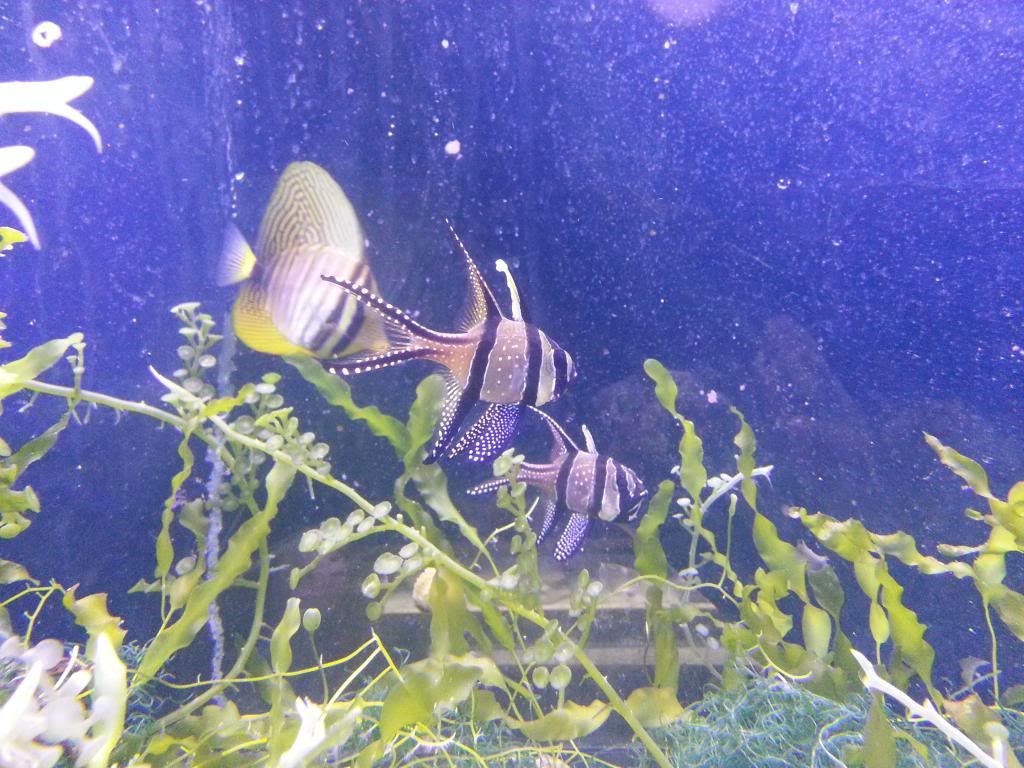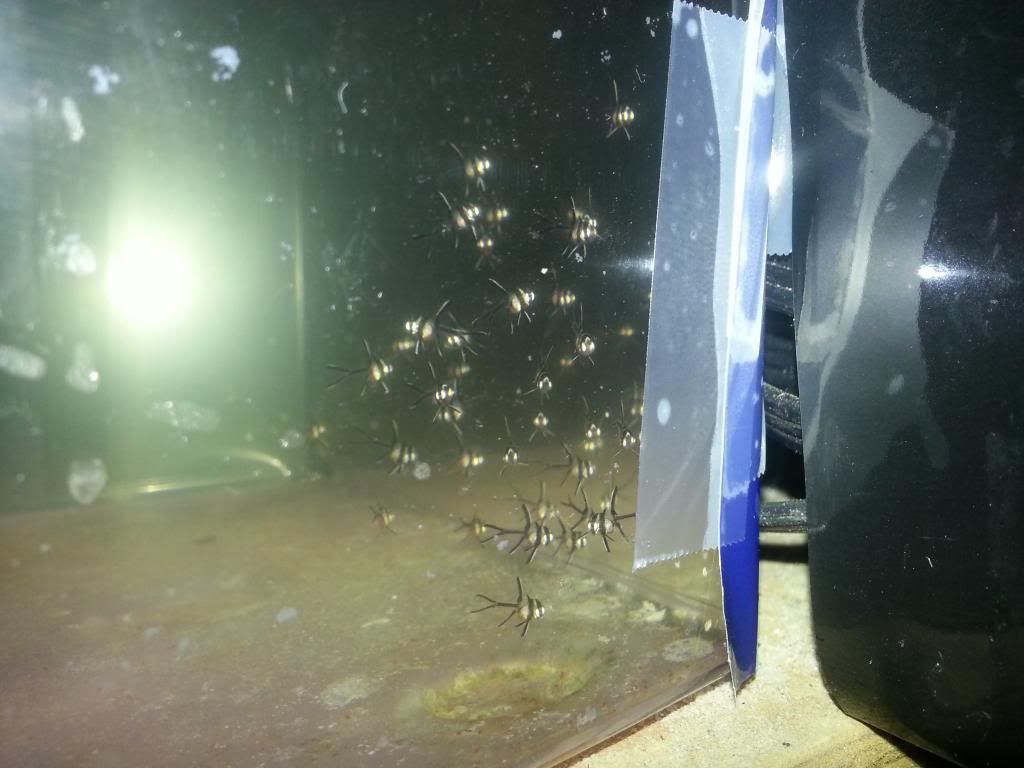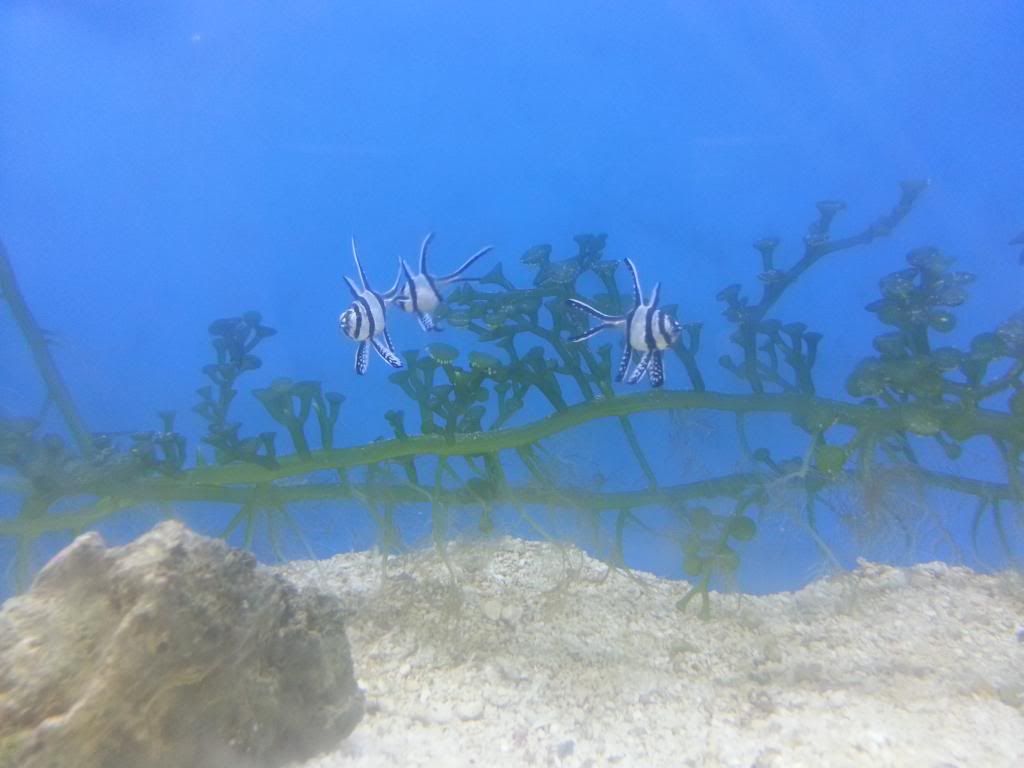Simply breeding and raising Banggaii Cardinalfish, easily
by
, 04-24-2013 at 10:02 AM (8604 Views)
With breeding marine fish really starting to take off in recent years, it's really about time you joined the fun. For most people, the obvious starting point is clownfish. It's easy to obtain good broodstock but spawning can take years of waiting, the babies need to start on live food, and the live food needs fed and raised just as much as the clownfish larvae.
Enter: Banggaii cardinalfish.
Easy to pair, easier to raise than clownfish, and with wild populations in possible peril it gives YOU an opprotunity to have a real impact on the marine trade.
Obtaining a pair
For starters, unless you're going to be super serious about raising a whole lot of Banggaiis, don't buy wild broodstock. While it's true that a healthy Banggaii is a fairly easy to keep fish, wild stock is not. I can tell you from first-hand experience, the most likely scenario is that you will buy a trio of cardinals waiting for a pair to emerge. One by one they stop eating and if you're lucky, one has survived. To avoid this, buy captive-bred stock for your first pair. Yes, you will pay more. It will be worth it.
The other method to getting a good pair is finding one. If you have a local reef club, see if anyone has a pair they will sell. I obtained both of my pairs through private owners looking to get rid of some fish and both times got healthy, eating, ready to spawn fish.
Sexing
Sexing is fairly straightforward in healthy stock. The fish need to be eating well and have good weight on them but provided that is the case, it doesn't take long until you can tell the gender of every healthy Banggaii you see.
Rather than take credit for the hard work of others, you should go HERE or HERE to figure out how to do this. This method has been proven by others and myself as 100% accurate, 100% of the time.
Breeding
Breeding Banggaii cardinalfish is the easiest part of all. That pair that you made? Feed them well in an aquarium together. I would suggest at least 20 gallons. Food should be rich in fatty-acids. I feed my pairs PE Mysis and Hikari Mysis. I would generally even recommend soaking food in some form of vitamin supplement, I use Selcon.
After some time together, your pair should look like this:
The female is in the front, the male is in the back with the bulging mouthful of eggs.
A good male will hold the eggs until they hatch and then proceed to hold the young until they are ready for release, which takes a little over 31 days. One month. If your male eats the eggs or even the young before he should have, don't worry. Give him another chance and if he is nice and plump upon receiveing the mass of eggs, he should eventually get pretty good at this. Rather than wait for the male to release them on his own, I write on the front glass of the tank in Sharpie the first day the male refuses to eat and at 30 days, I catch the male. The first technique I use to get him to spit the young is slowly raising him out of water to get some air in his mouth and slowly lowering him back in. If this is successful, make sure the male doesn't still have air trapped in his mouth before releasing him back into his tank.
If this is not successful, I very, very carefully hold the male and very, very gently pry his mouth open. Hopefully the young swim out and all is well. If they don't swim out, I literally shake them out of him. Still gently, but it usually works.
Raising
Now we have anywhere from 20-40 tiny replicas of the parents.
Growout can be done in about any small aquarium filled with the water from the parents tank. Personally, I use a six gallon aquarium with a simple piece of rigid airline creating water movement. A ten gallon works just as well. Decoration should be minimal and I prefer to not have substrate at first so excess food can be siphoned out. I've seen a lot of people using homemade urchins to provide the young with natural-like shelter. I quit using them after realizing my fish didn't use them, most likely because they were horrible looking.
If the goal is only to succeed, feed the babies Selcon soaked frozen baby brine. There will be heavy losses in the first two weeks doing this, but you will at least have some to survive.
For maximum survival rates, start the young on newly hatched baby brine shrimp (see HERE) that has been enriched with Selcon. Failure to enrich first foods results in young spiraling to the bottom when startled. Not fun to see.
Slowly mix in frozen foods and do water changes frequently to maintain good water quality and you're home free. Repeat daily until the young have reached around 3/4" and go to your favorite LFS (after you talk to them about this of course!) with your very own captive-bred, local Banggaii cardinalfish.
Questions or comments? Feel free to reply and I'll be glad to help out!















